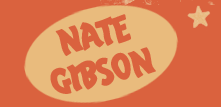Country Music People magazine selected Nate Gibson & the Stars of Starday as one of the “Top 10 Country Music Releases of 2019” in their January 2020 Critics’ Choice issue. Bluegrass Unlimited called it, “The most fun set of... classic country and rockabilly music in many years” and “Heaven for any lover of 1950s country.” Available on CD (with 56-page booklet), 2xLP (deluxe gatefold double album on red or black vinyl), and cassette from Bear Family Records, Discogs, or wherever fine music is sold. Individual Starday Star bios and photos can be accessed in the links to the left.
ABOUT THE PROJECT:
Starday pressed the first records by George Jones, Willie Nelson, Roger Miller, Dottie West, and the Country Gentlemen; released some of the last records by old-time country acts like Stringbean, the Shelton Brothers, the Blue Sky Boys, and Molly O'Day; and revived the careers of several artists dropped by major labels such as Red Sovine, Cowboy Copas, Johnny Bond, and the Willis Brothers.
Starday was among the first country music labels to heavily invest in the LP as a format, pressed more rockabilly records than any other independent record label, and created the largest bluegrass catalog in the world. Starday not only established itself as THE label for East Texas honky-tonk in the '50s, and for truck drivin' and sacred music throughout the '60s, but also pressed the largest line of country music custom recordings, allowing young newcomers like Nelson, J.J. Cale, Link Wray, and hundreds more the opportunity to get radio exposure and sell band merchandise.
When co-founder and label President Don Pierce took over sole control of the label in 1958, his intent was not to compete with the major country music labels in downtown Nashville, but instead to create a Nashville-based anti-Nashville music empire. Scooping up acts dropped by the major labels, Pierce promoted what he called "old-time," "old-fashioned," and "traditional country music" (often interchangeably), long before "classic country" became a recognized term. Recording Grand Ole Opry old-timers, bluegrass bands, gospel quartets, country music side-men, country comedians, and industry newcomers, between 1953 and 1968 Starday released roughly 3,000 records by these outsider traditionalists.
Embracing niche markets and bucking major label trends, Pierce's Starday never scored a million seller, yet it undeniably made an important contribution to American music by recording and preserving thousands of roots and traditional music masters. For these reasons and many more, I became fascinated with the label. I recorded my first record back in 2001 with Yodelin' Kenny Roberts and his songs and stories about Starday and the country music industry consumed me. In the years that followed, I wrote a book about the label called The Starday Story: The House That Country Music Built (University Press of Mississippi), produced radio programs and documentaries, obsessively collected the original records, presented papers at academic conferences, incorporated Starday songs into my own setlists, booked Starday artists at music festivals, and even backed up a few of them myself. I tried my best to share the Starday stories and music that had so generously been shared with me. The artists, musicians, employees, and family members forming the Starday community became lifelong friends and I made a commitment to being their advocate whenever I could.
And so, my ears were perked in October 2016 when a historic preservation firm in Nashville pegged the Starday Studio as a decrepit property that they feel is worthy of preservation. Unfortunately, the building is not for sale. It's disappointing, but Starday was never great because of their building, but because of the many talented folks who worked and recorded there--many of whom are still with us. Not only are many of the original Starday artists living, many are still making music at a very high level. Around May of 2017, I began brainstorming how to celebrate Starday in a way that honored and amplified the music of these musicians.
After making a few phone calls, I loaded up my car with recording equipment, a guitar, and an upright bass, to visit with my Starday friends now living in Texas, Virginia, West Virginia, Tennessee, Oregon, Georgia, and Arkansas. I recorded extended oral histories and brought musicians back into the studio. I went to the older studios where Starday sessions took place, like Gold Star Studios [now Sugarhill Studios] in Houston, and I made video tours. I visited archives and tracked down original photos. Along the way I asked my friends to share with me their songs and stories about Starday. I didn't know exactly what I had in mind as an end goal, but I knew that all of the Starday artists were between 70 and 100 years old and I wanted to document as much as possible.
A CD by Bear Family and a self-produced double LP are the among the end results. I tracked down 14 Stars of Starday (See tabs to the left for more info on each artist) and together we re-recorded 24 of my favorite Starday songs. Generally, I selected and arranged the tunes, the Starday artists selected the keys, I gave my best effort to sing a verse or two and harmonize on the choruses, and together we laid down some really fun rockabilly, country, bluegrass, honky-tonk, and gospel tracks. Backing us on the various sessions were some supremely talented musicians including Marty Stuart and members of his Fabulous Superlatives band, Kenny Vaughan and Chris Scruggs, as well as Pete Finney (Patty Loveless), Steve Hinson (Randy Travis, George Jones), Jerry Miller (Eilen Jewell), Dave Roe (Johnny Cash), Kevin Smith (Willie Nelson), and many more talented friends!
About halfway into the project, my friend Jim Kirchstein (Owner and Founder of Cuca Records), introduced me to an amazing marionette maker named Ken Vogel. I became a huge fan of Ken's ornate and detailed puppets and commissioned marionettes to be made of all of the Starday artists, myself, and many of the musicians. As the project progressed, I called on several friends in Wisconsin to become amateur puppeteers and we made silly music videos for many of the songs. My successful Kickstarter campaign funded further video editing, marionette shipping (to the Stars of Starday), as well as deluxe LP production. After the campaign ended, Bear Family offered to press and distribute the CD and I released the double vinyl version myself (Gibson Records).
I've offered very brief introductions to each artist online, but if you would like to read more detailed artist bios and anecdotes about the project, the Bear Family CD comes with a 56-page illustrated booklet. And of course, nearly everyone on the compilation has stories included in The Starday Story. Thank you for celebrating and supporting the people who made Starday so special back in the '50s and '60s, as they are the very same people making great music today, and thank you to anyone who purchases this music in physical format.
-Nate





